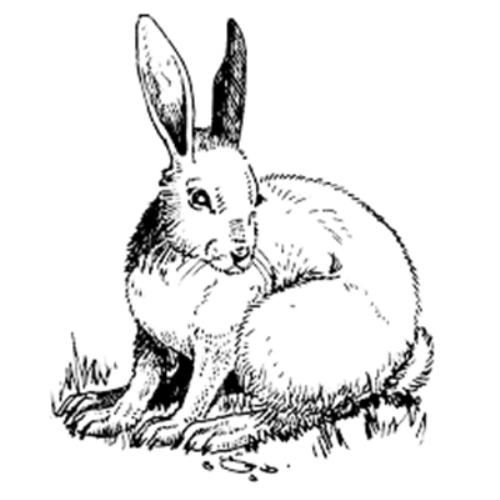History of... hares
Name:
Hare
Scientific Name:
Lepus europaeus
Family:
Leporidae
Conservation Status:
Least Concern
Habitation:
Mixed farmland.
Global Location:
Globally
Discovery:
The Paleolithic era
The history of hares is a long and fascinating one that is deeply intertwined with human civilization. Hares have been depicted in art, literature, and folklore for centuries, and have played a significant role in many cultures around the world.
Hares are a type of lagomorph, which is a group of animals that includes rabbits and pikas. They are found all over the world, from the Arctic tundra to the deserts of Africa, and can adapt to a wide range of habitats. Hares are known for their long ears, powerful hind legs, and distinctive hopping gait, which they use to outrun predators.
The earliest known depictions of hares date back to the Paleolithic era, when they were carved into cave walls by early humans. Hares were also featured in ancient Egyptian art, where they were associated with the goddesses Isis and Hathor, and were often depicted as symbols of fertility and rebirth.
Hares were also an important source of food for many cultures throughout history. In Europe, hare meat was considered a delicacy and was often served at feasts and banquets. In some African and Asian countries, hare meat is still consumed as a traditional food.
During the Middle Ages, hares were still highly regarded. They were often kept as pets and featured prominently in the art of the time. However, as hunting became a popular leisure activity, hares became a target for sport. Hunting for hares became so popular that in some areas, hare populations began to decline rapidly.
Today, hare populations are still threatened by habitat loss, disease, and hunting. In some areas, they are considered a pest species and hunted extensively. However, conservation efforts have been made to protect hare populations and their habitats.
Many countries have implemented hunting regulations and conservation programs to ensure their survival.
Hares are important to the ecosystem as they play a significant role in the food chain. They are preyed upon by animals such as foxes, owls, hawks, and eagles. Hares, in turn, feed on plants and grasses, helping to control plant growth and promote diversity in their ecosystems. 


